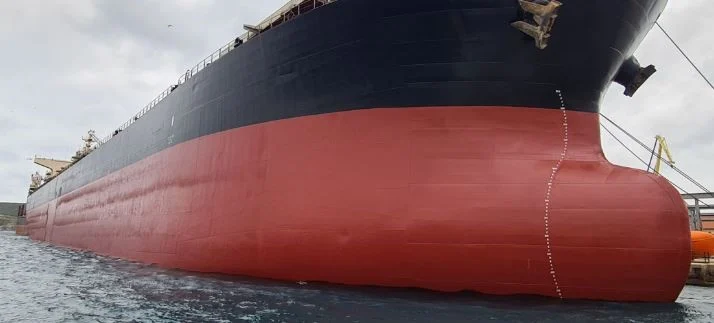When others see a ship, they marvel at its height, the grand bridge, superstructure, or high-stacked cargo on board. Little do they notice, however, that beneath all that external machinery and superstructure is the actual workhorse of the ship — the hull. It is the surface that directly deals with the sea, cutting through waves, supporting the weight of the ship, and protecting everything within. Essentially, the hull is what provides the ship with structure as well as with the means to float and operate safely.
What Actually Is the Hull?
The hull is the watertight structure of a vessel that allows it to float, stay upright, and move safely. It runs from the bow (front) to the stern (back) and from the keel (lowest main structural backbone) to the principal deck. Although the above-water part of the hull is significant, it is the underwater section that is in continuous contact with forces such as pressure, drag, and corrosion.
There are two primary sections to each hull:
Above the waterline – This section has to do with wind, spray, and outside load such as fenders or against other boats.
Below the waterline – This is where resistance, fouling, and hydrodynamic conditions apply.
A Hull’s Functions
The hull is not merely a box. It serves several essential purposes:
Provides Buoyancy: Its form and enclosed structure keeps the boat afloat.
Proves Stability: A well-designed hull will resist rolling and capsizing, even in rough seas.
Minimizes Resistance: The more hydrodynamic the form, the smoother and more efficient the water movement.
Safeguards Cargo and Machinery: It creates a watertight envelope around all critical spaces.
Types of Hull Shapes
Displacement Hulls
On most merchant ships, this design bullies water out of its path as it travels. It’s slow but reliable and very fuel-efficient when moving slowly. Consider tankers, bulkers, and freighters.
Planing Hulls
Generally found on small, high-speed boats. These lift and plane along the surface at higher speeds instead of cutting through the water.
Semi-displacement Hulls
A combination of both, with better speed than displacement but greater stability than straight planing hulls. Employed in a few ferries and patrol boats.
Hull Construction: Steel, Keel, and Beyond
Contemporary commercial ship hulls are made from marine-grade steel plates welded over a skeleton formed by longitudinal and transverse stiffeners. The keel, which is along the bottom lengthwise, is frequently the initial piece that is placed in a shipyard and forms the spine of the hull.
The hull is subdivided with watertight compartments and bulkheads, which contribute to strength and avoid complete flooding in the event of damage. Double hulls are also found on some ships, particularly tankers, for minimizing the risk of pollution if the outer hull were to be damaged.
Hull Maintenance: What You Don’t See Matters Most
The hull of a ship fights corrosion, bio fouling (barnacles and algae), and metal fatigue continuously. That is why:
Anti-fouling paint is used below the waterline.
Ultrasonic thickness readings are made on a regular basis to monitor for wear.
Dry docking is done every couple of years to inspect and mend the underwater hull, rudder, and propeller.
You would be smart to know that problems such as slow speed, excessive fuel consumption, or poor manoeuvrability commonly begin with something as simple as a fouled hull.
Little-Known but Important Details
Hull Girder Strength – It’s not only local damage you’re concerned with. Ships sag over waves as a beam suspended from the water. When loaded or on the ocean, engineers design for hogging and sagging.
Shell Expansion Plan – Ship officers use this plan when inspecting or docking the hull to locate damages by frame and plate numbers. Knowing roughly where the layout is can save much time.
Sacrificial Anodes – These are small metal pieces welded onto the hull to corrode instead of the ship’s body. Regularly checking these can prevent major corrosion damage later.
Closing Thoughts: More than Just a Shell
The hull doesn’t have buttons to push or bells to ring, but without it, a vessel has no purpose. It bears the cargo, battles the ocean, and silently guarantees every trip starts and ends safely. With every gleaming radar or computer system on board, there’s a plate of steel beneath holding it all together.
For sailors, understanding your hull—its capacity, its maintenance cycle, its performance under load—means understanding your ship.


